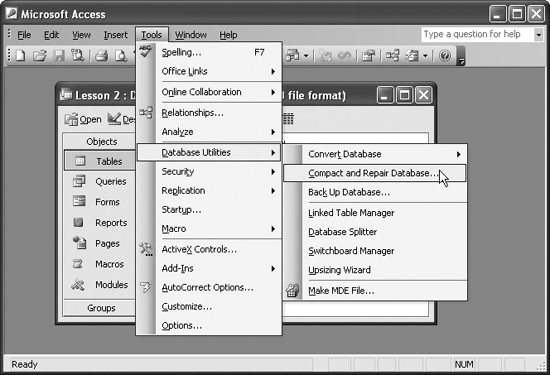Lesson2.16.Compacting and Repairing a Database
Lesson 2.16. Compacting and Repairing a DatabaseFigure 2-36. Use the Compact and Repair Database command to clean up the database. Cars require maintenance to keep them running at their peak performance, and databases are no different. Your Access databases require some routine maintenance to prevent and/or correct problems and to keep them running at top performance. This lesson covers the two database utility commands:
Microsoft has combined compact and repair into a single command in Access 2003. If you have been busy adding, editing, and deleting records for a while or if your database seems buggy, sluggish, or is generating error messages, it would be a good idea to run the Compact and Repair Database command. Here's how to compact and repair a database:
|
EAN: 2147483647
Pages: 209

